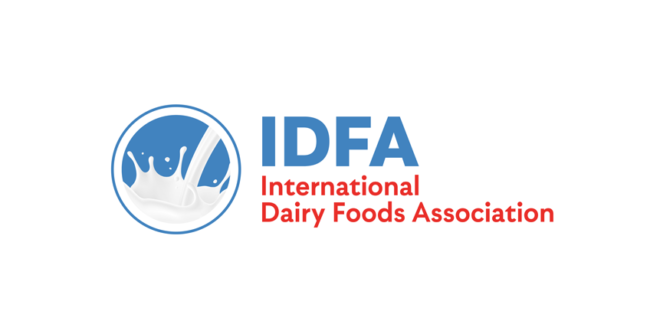WASHINGTON — A joint announcement Monday from the International Dairy Foods Association (IDFA), the Port of Los Angeles, and CMA CGM marked the formation of a new Dairy Exports Working Group, which intends to identify and deal with supply chain problems that are impeding the export of dairy products.
IDFA, the Port of Los Angeles and CMA CGM announced at Dairy Forum 2022, in Palm Desert, Calif., that the newly formed group will focus on West Coast seaports, because that’s where most dairy exports initially leave the US. Additionally, the group wants to streamline the process of moving dairy products originating in interior states, out to the West Coast.
Unveiled by Port of Los Angeles executive director Gene Seroka and IDFA president and chief executive officer Michael Dykes, D.V.M., the Dairy Exports Working Group plans on exploring many solutions to obstacles encountered in ocean and railway shipping.
“US dairy exports reached a near-record $6.4 billion in 2020 and continued to set a blazing pace in 2021 due to surging global demand, but the US dairy industry could be exporting much more to destinations around the world if there was more reliability and predictability in the supply chain,” Dykes said. “Our IDFA members are pleased to collaborate with the Port of Los Angeles and the CMA CGM Group in this Dairy Exports Working Group on potential market-based solutions to clearing bottlenecks at our West Coast ports and land and rail systems. This type of collaboration is essential to avoid significant future disruptions to the U.S. dairy supply chain that will result if exports continue to languish.”
With the US dairy supply chain unstable recently, companies are feeling the results financially. The IDFA reported the situation is costing companies millions, and that some dairy exporters have been forced to airfreight their products – a more costly endeavor, sometimes 20 times more expensive, in fact – in order to fulfill their contracts.
The IDFA and its members plan to work with not only their Port of Los Angeles and CMA CGM partners, but also other ports, carriers and supply chain stakeholders.
The Dairy Exports Working Group laid out some of the impediments is aims to address, such as:
∙ Exploring ways to aggregate and streamline dairy exports from multiple suppliers to ensure more consolidated and attractive bookings.
∙ Working to increase rail availability in the interior of the US to reach non-coastal exporters.
∙ Determining viability of implementing a “fast lane” concept for vessels agreeing to depart full or with fewer empty cargo containers.
∙ Defining agreed terms for exporters using empty containers currently languishing at US ports.
∙ Establishing guarantees to fix and surpass ghost bookings.
Supply chain issues have hit dairy exporters hard, Seroka said, adding that trade policy also has made it difficult to export goods to global markets.
“I’m pleased to collaborate with our dairy industry partners and the CMA CGM Group to launch this working group and find solutions that will benefit not only the dairy industry but all American exporters,” Seroka said. “We look forward to others joining this important initiative.”
The CMA CGM Group, which specializes in contributing to sustainable globalization through shipping and logistics, got involved with the Dairy Exports Working Group to support America’s farmers, said Ed Aldridge, president of CMA CGM and APL North America. Aldridge said CMA CGM is committed to taking bold actions to ensure farmers get their goods to market in a timely fashion.
“With the Dairy Exports Working Group, we will have all the right players in the room,” Aldridge said. “This collaborative partnership will enable us to quickly implement innovative solutions designed to not only help the dairy industry with current supply chain challenges, but also to pave the way for the future.”
David Ahlem, president of Hilmar Cheese Company and chair of the IDFA Executive Council, said he is hopeful the Dairy Exports Working Group will mark the beginning of “a new period of collaboration among dairy processors, ports and shipping companies to find market-based solutions for the supply chain challenges impacting US dairy exporters.”

